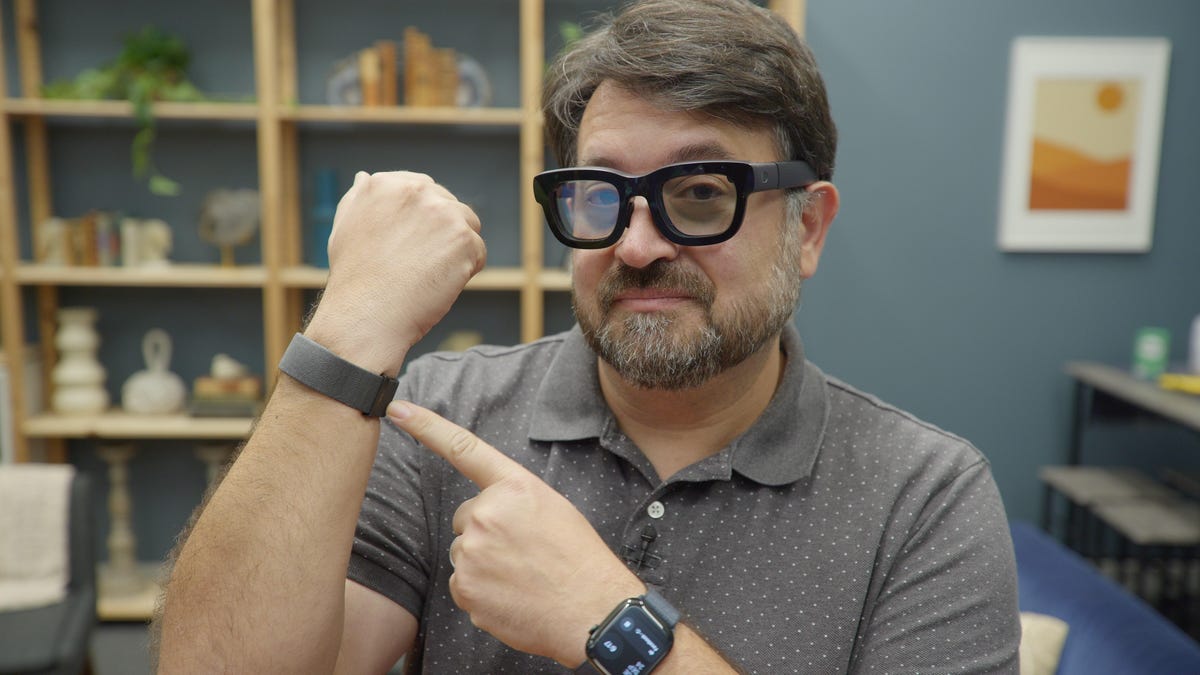Meta Gears Up to Launch EMG Wristband for Next-Gen AR Glasses

Key Points
- Meta tested an EMG‑based neural wristband on its Project Orion AR prototype.
- The wristband reads muscle impulses to enable gestures like pinches, taps and thumb swipes.
- Meta plans to launch the band with a new display‑enabled glasses platform, code‑named Hypernova, at Meta Connect.
- The bundled package is expected to cost at least $800.
- CEO Mark Zuckerberg calls the EMG band a new paradigm for interface control.
- CTO Andrew Bosworth notes the band may be less essential for display‑free glasses such as Meta Ray‑Bans.
- Meta may integrate EMG technology into a future smartwatch for fitness tracking.
- Competitors including Apple, Google, Samsung and others are pursuing their own gesture‑based wearables.
Meta is preparing to release a neural wristband that reads muscle impulses to control its upcoming augmented‑reality glasses. Tested on the company’s Project Orion prototype, the EMG band enables gestures such as pinches, taps and thumb swipes without relying on cameras. The accessory is expected to accompany a new display‑enabled glasses platform, code‑named Hypernova, at the Meta Connect event. While the band may cost at least $800 and could be bundled with a smartwatch, Meta executives say it may become less essential for display‑free glasses like the Ray‑Bans. The move positions Meta against rivals such as Apple, Google and Samsung, all pursuing their own gesture‑based wearables.
Testing the EMG Band on Project Orion
Meta recently evaluated a next‑generation AR headset called Project Orion at its Menlo Park campus. The prototype combined 3D displays, a wireless processor puck and a neural wristband that senses electromyography (EMG) signals—electrical activity generated by muscle movements. During the demo, the wristband allowed the tester to perform small gestures, such as scrolling, selecting and navigating, often in conjunction with eye‑tracking.
EMG as a New Interface Paradigm
Mark Zuckerberg has described the EMG band as a "whole new future paradigm for interfaces," offering an alternative to camera‑based hand tracking or handheld controllers. The band can register actions like pinches, taps, thumb swipes and, potentially, typing over time. Meta’s Reality Labs chief scientist Michael Abrash has discussed the broader possibilities of this neural input technology, which Meta acquired through CNTRL‑Labs in 2019.
Upcoming Release and Pricing
According to the source, Meta plans to launch the neural band as an accessory for a new pair of glasses with embedded displays, code‑named Hypernova, at the Meta Connect conference on Sept. 17. The band is expected to be sold together with the step‑up display glasses and is projected to cost at least $800.
Potential Extensions and Compatibility
Meta may extend the EMG technology to its own smartwatch, enabling fitness and health tracking in both VR and AR contexts. However, CTO Andrew Bosworth indicated that a wristband might be less necessary for display‑free glasses such as the existing Meta Ray‑Bans, where voice commands could remain the primary interaction method.
Competitive Landscape
Apple already offers gesture‑based functions on the Apple Watch and is expected to introduce AirPods with infrared cameras for hand‑gesture detection. Other manufacturers are exploring camera‑based gestures in glasses, connected rings and smartwatches. Google’s display‑enabled glasses and upcoming offerings from Samsung, Amazon, Snap and TCL add further pressure on Meta to refine its wearables strategy.
Key Areas for Improvement
Beyond the EMG band, Meta aims to improve battery life, camera quality, AI capabilities, reliability and serviceability in its next‑generation glasses. The wristband represents a distinctive wildcard in the market, potentially giving Meta a unique edge in the evolving AR ecosystem.